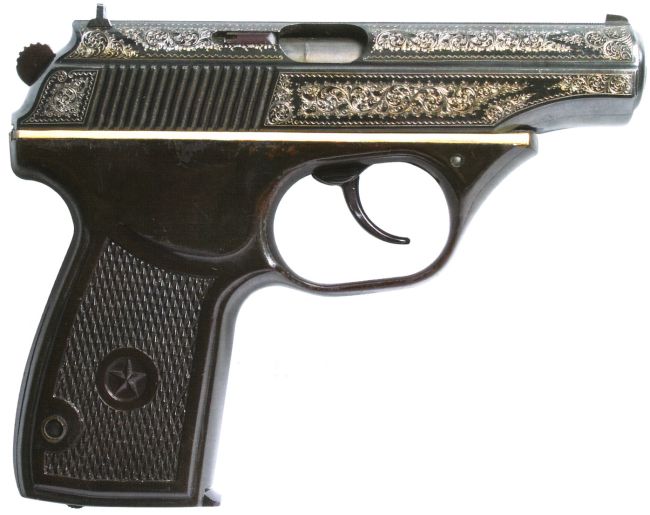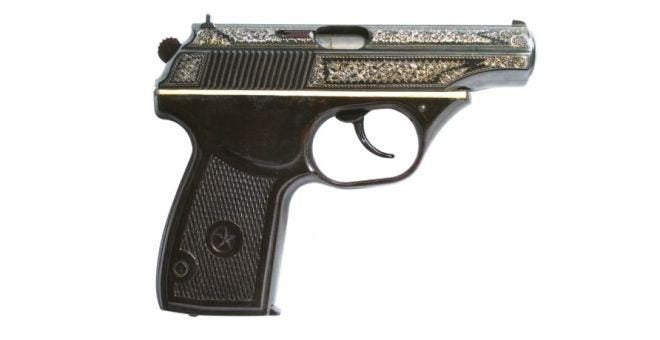In this age of polymer-framed pistols, it is interesting to take a look at the history and find out where it all started. If you have served in the military or if you are a hunter, hiker, outdoorsman or just carry a gun on an everyday basis, you’ll agree that weight matters. When carrying a firearm for a long period of time you really understand how true is the saying of “ounces make pounds, pounds make pain”. From this perspective making firearms lighter without sacrificing their characteristics has always been a tough task for the designers.
With the development of modern high-strength polymers, firearms industry changed drastically. That change was especially significant in handguns when polymer-framed pistols were introduced. While they were not accepted well at first with people calling Glocks “ugly bricks”, there is no doubt now that polymer-framed pistols dominate the market. Even militaries, which are usually skeptical towards anything new and revolutionary in small arms designs, realize the advantages and switch to polymer-framed sidearms. A good example is the US military, which has just recently chosen polymer-framed SIG pistols to be adopted.
So let’s see when the designers actually started thinking about and experimenting with polymer pistol frames. The popular belief is that the first polymer pistol was HK VP-70. It is true and not at the same time. If we are talking about a production model, then yes, HK VP70 is the first one (introduced in 1970). However, if you are asking the first ever made working polymer pistol, then the answer is Russian TKB-023 (ТКБ-023), which is essentially a Makarov pistol with a polymer frame (designed in 1963)!
Russian arms designers have always been working on lightening the firearms and accessories. By 1961 they managed to make AKM magazines from an aluminum alloy weighing 166 grams (5.85 oz) as opposed to the existing 0.7 mm sheet metal stamped magazines, which weighed 334 grams (11.8 oz). So it didn’t take too long until Soviet firearm design bureaus were tasked to make the service Makarov pistol lighter. Particularly, in 1963 Ministry of Defense of the Soviet Union ordered the arms designing bureau TsKIB SOO to modernize the Makarov pistol with the main goal of making it 100 grams (3.53 oz) lighter. The prototype pistol was code named TKB-023.
It was obvious that the main part which weight could be significantly reduced was the frame. Let me remind you, that Makarov is a direct blowback pistol, so you can’t really reduce the slide weight, because the weight of slide (along with recoil spring weight) is what slows down and prevents the system from a premature opening of the breech. Theoretically, you can lighten the slide by compensating it with heavier recoil spring. But it wouldn’t be practical, because if you have ever racked a Makarov pistol slide, then you’ll agree that the spring is already pretty stiff.
So, the remaining approach was to make the frame from a lighter material. Arms designers named E. Moiseev, T. Lashnev and V. Khromenkov started the experiments. First attempts were to make the TKB-023 frame out of a lighter steel alloy. However, these proved to be non-reliable. The frames were bending and causing malfunctions and had very low corrosion resistance characteristics. Next material they used was a titanium alloy. The titanium frame seemed to be good, but it was too difficult and expensive to manufacture. So after a number of trials and errors, the designers decided to make the frame out of a moldable polymer called КС-30.

The goal was finally achieved – they made it exactly 100 grams lighter (3.53 oz). The overall weight of the TKB-023 was 710 grams (25 oz) loaded and 630 grams (22.2 oz) unloaded. Not only the new material allowed them to make the gun lighter, but also it could be manufactured faster, easier and cheaper.
However, usage of polymer forced to significantly change the original design of the Makarov pistol. Because the trigger guard is a one piece with the frame, you no longer can disassemble the pistol by pulling down the trigger guard as in conventional Makarov pistols. For disassembly, they added a special button located inside the trigger guard, right at the base of the trigger. The mainspring fixation was also redesigned. The gun no longer had the screw in backstrap holding the grip and mainspring assembly. Now the main spring was mounted on a sheet metal stamped bracket and secured inside the grip by a cross pin on the bottom portion of the grip. There were also a couple of other minor changes in the design.
Izhevsk Mechanical Plant made a trial batch of these pistols. The pistols were put through extensive military torture tests. One of the tests included freezing the gun down to -50°C (-58°F) degrees and then dropping it from one meter height on a steel railroad rail. During that test, the trigger guard of TKB-023 broke, but it retained its functionality and kept shooting. Interestingly, the conventional Makarov pistol failed that test – it bent the trigger guard and disassembled itself during the first shot.
Despite of promising results and achieved weight goal, TKB-023 was never adopted and the project itself was canceled. One of the reasons is that the technology of polymer molding and press forming wasn’t developed enough in the Soviet Union. The scientists and military officials weren’t sure how long was the life of new polymer material and in what conditions it should be stored. Plus, there were rumors that the polymer will degrade during continuous use in extreme cold or hot conditions. I think that tooling up costs for redesigned parts could also be a factor against TKB-023.
So, there you have it – the world’s first polymer-framed handgun made in 1963. Of course, it is possible that there was a polymer gun even before this one. So if you know about a polymer pistol design that predates TKB-023, please let us know in the comments below.
Sources:
www.huntsmanblog.ru
www.modernfirearms.net
 Your Privacy Choices
Your Privacy Choices
